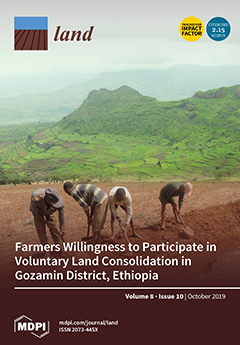The
ejido system, based on communal land in Mexico, was transformed to private ownership due to neoliberal trends in the 1990s. Based on the theory of stakeholders being agents of change, this study aimed to describe the land policies that changed the
ejido
[...] Read more.
The
ejido system, based on communal land in Mexico, was transformed to private ownership due to neoliberal trends in the 1990s. Based on the theory of stakeholders being agents of change, this study aimed to describe the land policies that changed the
ejido system into private development to show how land tenure change is shaping urban growth. To demonstrate this, municipalities of San Andrés Cholula and Santa Clara Ocoyucan were selected as case studies. Within this context, we evaluated how much
ejido land is being urbanized due to real estate market forces and what type of urbanization model has been created. These two areas represent different development scales with different stakeholders—San Andrés Cholula, where
ejidos were expropriated as part of a regional urban development plan and Santa Clara Ocoyucan, where
ejidos and rural land were reached by private developers without local planning. To analyze both municipalities, historical satellite images from Google Earth were used with GRASS GIS 7.4 (Bonn, Germany) and corrected with QGIS 2.18 (Boston, MA, US). We found that privatization of
ejidos fragmented and segregated the rural world for the construction of massive gated communities as an effect of a disturbing land tenure change that has occurred over the last 30 years. Hence, this research questions the roles of local authorities in permitting land use changes with no regulations or local planning. The resulting urbanization model is a private sector development that isolates rural communities in their own territories, for which we provide recommendations.
Full article





